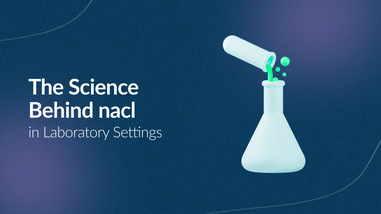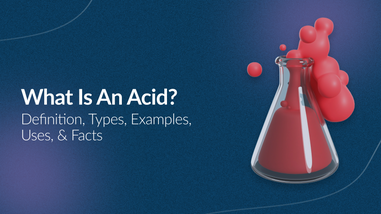- No products in the cart.
When it comes to disinfection, especially in the age of heightened awareness about hygiene and cleanliness, two chemicals often come into focus: Isopropyl Alcohol (IPA) and Ethanol. Both are powerful disinfectants widely used in various settings, but understanding their differences and best uses can help you make informed decisions about which to use for your specific needs.
Isopropyl Alcohol (IPA): The Basics
Isopropyl Alcohol, commonly referred to as IPA, is a colorless, flammable chemical compound with a strong odor. It is a secondary alcohol and is available in various concentrations, with 70% and 99% being the most common. IPA is renowned for its effectiveness as a disinfectant, particularly due to its ability to kill bacteria, viruses, and fungi.
One of the primary advantages of IPA is its quick evaporation rate, which makes it ideal for disinfecting surfaces that need to be used almost immediately after cleaning. This quick-drying property also ensures that there is minimal residue left behind, which can be crucial in medical and electronic environments where contamination must be strictly controlled.
Ethanol: The Basics
Ethanol, also known as ethyl alcohol, is another popular disinfectant. It is a primary alcohol, often derived from the fermentation of sugars and starches. Ethanol is the same type of alcohol found in alcoholic beverages, but for disinfection purposes, it is usually denatured (mixed with other chemicals to make it unsuitable for consumption). Common concentrations for disinfection range from 60% to 95%.
Ethanol is highly effective at killing a broad spectrum of pathogens, including bacteria and viruses. It is also relatively non-toxic and is often used in hand sanitizers due to its effectiveness and safety for skin contact. Ethanol solutions tend to have a more pleasant smell compared to IPA, making them more user-friendly in environments like schools and offices.
Key Differences Between IPA and Ethanol
-
Chemical Structure: IPA is a secondary alcohol, while ethanol is a primary alcohol. This difference affects their reactivity and interaction with different pathogens.
-
Evaporation Rate: IPA evaporates faster than ethanol, which can be an advantage in situations where quick drying is necessary.
-
Skin Tolerance: Ethanol is generally less irritating to the skin compared to IPA, making it a better choice for products like hand sanitizers.
-
Effectiveness: Both IPA and ethanol are highly effective against a wide range of microorganisms. However, IPA is often considered slightly more effective against certain types of viruses.
-
Usage: IPA is frequently used in healthcare settings, laboratories, and for electronics cleaning due to its quick evaporation and minimal residue. Ethanol is commonly used in hand sanitizers, household disinfectants, and in environments where user comfort and safety are priorities.
Best Uses of IPA

- Medical Settings: IPA is widely used to disinfect surfaces, medical equipment, and even skin before injections due to its quick action and effectiveness.
- Electronics: Due to its fast evaporation rate, IPA is ideal for cleaning electronic components without leaving moisture behind.
- Laboratories: IPA is used to disinfect surfaces and equipment, ensuring a sterile environment for experiments and procedures.
Best Uses of Ethanol
- Hand Sanitizers: Ethanol is a key ingredient in many hand sanitizers, providing effective disinfection while being gentle on the skin.
- Household Disinfectants: Its pleasant smell and safety profile make ethanol a popular choice for disinfecting household surfaces.
- Public Spaces: Ethanol is used in schools, offices, and other public spaces where frequent hand disinfection is necessary.
Choosing the Right Disinfectant
The choice between IPA and ethanol depends largely on the specific application and user needs. For environments where quick drying and minimal residue are crucial, IPA is often the preferred choice. On the other hand, for applications involving frequent skin contact or where a more pleasant smell is desired, ethanol is the better option.
Lab Pro Inc.: Your Go-To Source for Disinfection Needs
When it comes to sourcing high-quality IPA and ethanol, Lab Pro Inc. stands out as a trusted provider. With decades of experience in supplying laboratory chemicals and equipment, Lab Pro Inc. offers a wide range of disinfectants to meet the diverse needs of healthcare facilities, laboratories, schools, and households. Their commitment to quality and customer satisfaction ensures that you receive the best products for your disinfection requirements. Whether you need IPA for a lab or ethanol for hand sanitizers, Lab Pro Inc. is your reliable partner in maintaining cleanliness and safety.
In conclusion, both IPA and ethanol are effective disinfectants with their unique advantages. Understanding their differences and best uses can help you choose the right disinfectant for your needs, ensuring a safer and more hygienic environment.
For over 40 years, Lab Pro Inc. is your steadfast source for acids, lab chemicals, premium cleanroom wipes, hand tools, lab equipment, and PPE apparel. Trusted by aerospace industries, medical device companies, and laboratories globally, we epitomize exceptional quality in every product. Experience the convenience of next day service in California. Contact us online or at 888-452-2776 to explore solutions tailor-made for the laboratory industry. Elevate your experiments with Lab Pro Inc. – your partner in precision and excellence.













































I have read your post, it’s very informative and helpful too for readers. For top-notch <a href=”https://lavoltage.com/ “>lighting installation in Los Angeles, look no further! Their expert team ensures every project shines brilliantly.